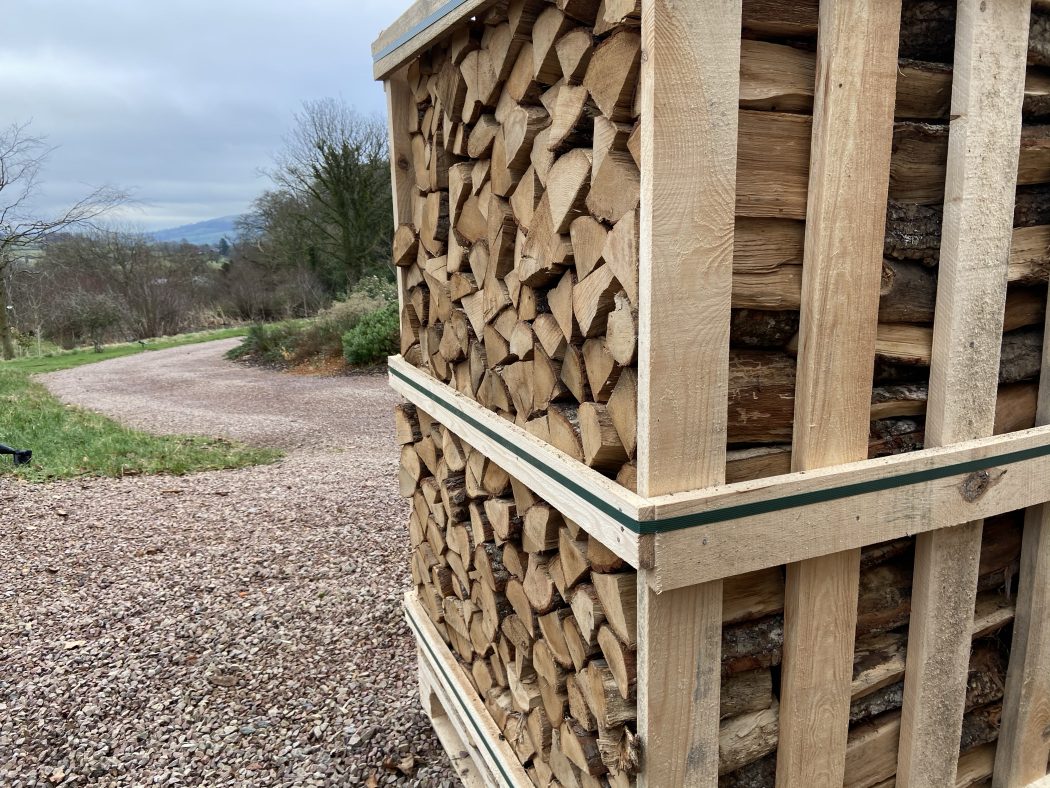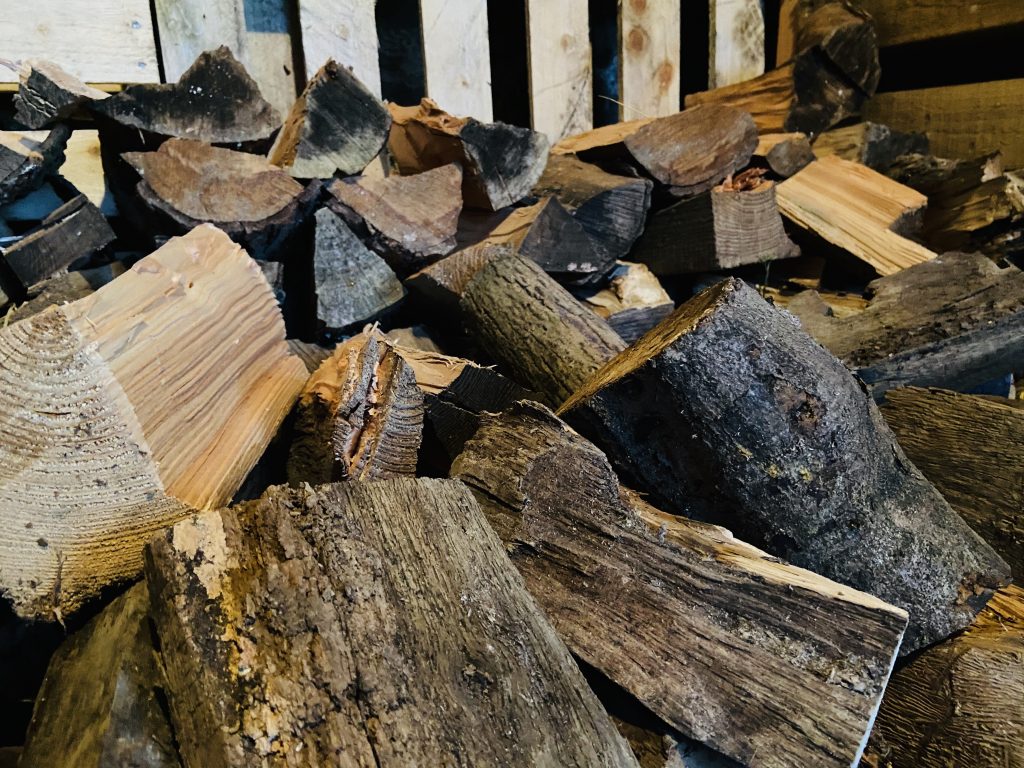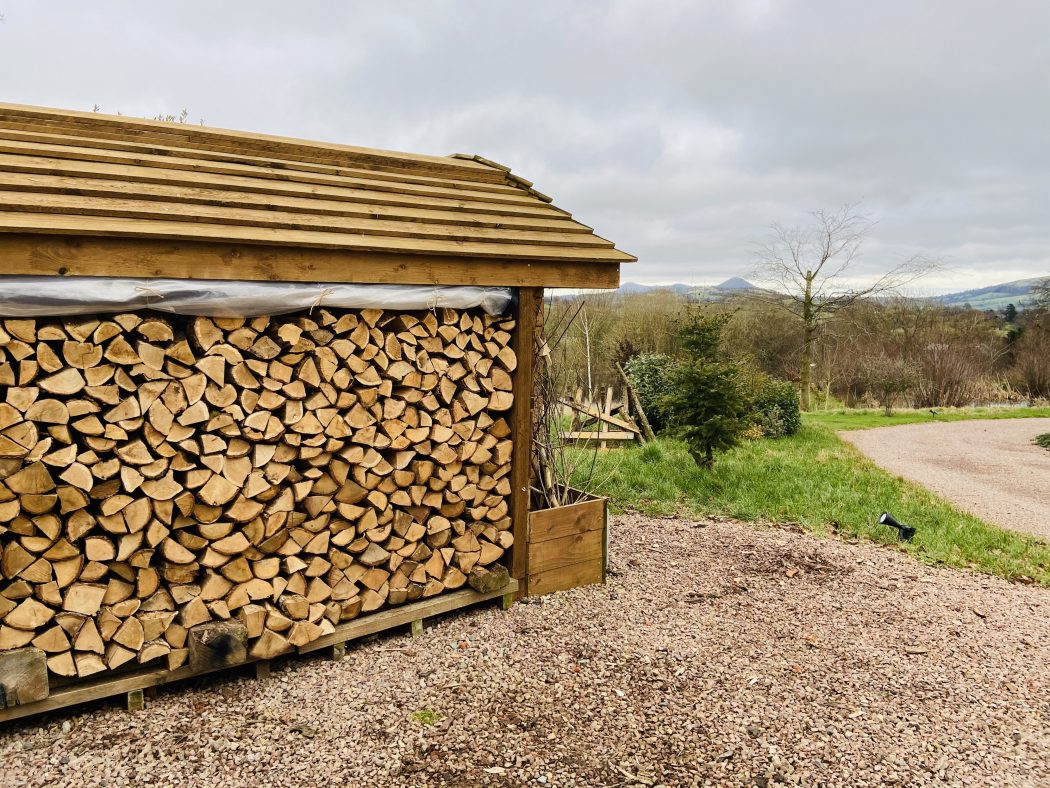We received a delivery of kiln dried wood as we’ve depleted our seasoned wood reserve, which we inherited from the previous owners.
We are in the process of drying wood that we’ve collected from our woodland to restock our supplies so that we don’t have to buy firewood in the future, but it’s going to take 1-2 years before it’s ready for burning. Some of the larger pieces will probably need three years.
So as a stop gap we opted for 3 cubic metres of kiln dried hardwood because from our research it’s the most efficient wood you can get for your wood burning stove.

What is kiln dried wood?
This type of firewood, as the name implies, is dried in a kiln with the aim of reducing moisture in a bid to make it a better, more efficient source of heating fuel. The average moisture level of a kiln dried log should be less than 20%.
From my understanding, the reduced levels of moisture in kiln dried wood also allows the fire to burn hotter and longer because the combustion is more efficient. This, by extension, means you’re saving on your heating bill.
Some resources I’ve read suggest that one kiln dried log will yield the same heat output as three non-seasoned logs with a high moisture level. They also obviously won’t blacken the glass on your wood burning stove.
Drying our own wood
We’ve recently finished building our own wood drying log store, and we’ve started to dry the wood we’ve collected from our woodland. We’ll cover this in a future video. All logs have been cut to approximately 25cm in length using a chainsaw, and we’ve then split the logs with our Rockforge Super Maul to varying sizes.
These split logs have now been stacked in our open garage where there is plenty of air movement and where they won’t get rained on. We’ve also built our log drying station from reclaimed pallets to guarantee maximum airflow around the stack.

We have separate stacks for logs and kindling. The kindling should take less than a year to dry fully.
The verdict on our kiln dried wood
To date, we’ve been using a mixture of seasoned birch, ash and oak in our Chesneys wood burning stoves. The heat output of these stoves using this wood has been excellent (you can read about them here).
We use our Stihl wood moisture metre to regularly gauge moisture levels in our firewood, and it’s always been below 20%. So the comparison of our seasoned logs versus the kiln dried wood is like-for-like in terms of moisture and density (hardwoods).
Our seasoned logs typically burn for around an hour, delivering a lot of sustained heat. The kiln dried logs are slightly smaller. They burn with the same heat intensity for around the same length of time.
We’ve needed to have a ready-to-go wood burning supply, which is why we purchased the wood, and we’re pleased that we have because at least we have a reserve that can assist us in a central heating emergency.
